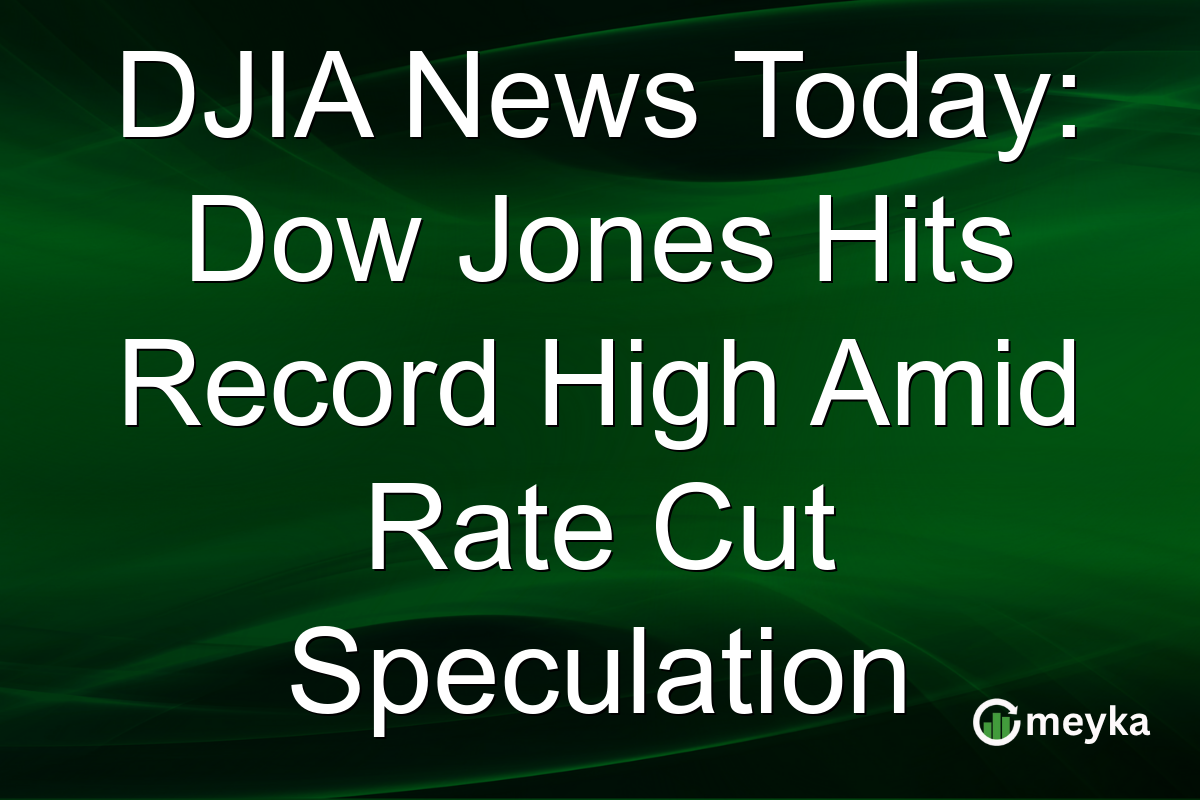DJIA News Today: Dow Jones Hits Record High Amid Rate Cut Speculation
The Dow Jones Industrial Average (DJIA) has recently achieved a new milestone, hitting a record high. This surge in the market is driven by growing optimism among investors over the possibility of a Federal Reserve rate cut. With economic data indicating a potential downturn in the labor market, speculations are rife that the central bank might step in to adjust interest rates accordingly. Let’s explore how these factors are influencing the Dow and what this means for the broader stock market rally.
Dow Jones Reaches New Heights
The Dow Jones Industrial Average, commonly known as the DJIA, has been on a remarkable journey, closing at an unprecedented high of 36,500. This significant achievement highlights the ongoing confidence of investors despite the broader market volatility. The DJIA’s remarkable performance can be partially attributed to the mix of industrial giants it represents, such as DJI constituent companies that have shown remarkable resilience and growth. One of the critical drivers behind this surge is the anticipation of a Federal Reserve rate cut. Historically, rate cuts have been used as tools to stimulate economic activity by making borrowing cheaper, thus encouraging spending and investment. As a result, investors are positioning themselves to benefit from potential monetary policy changes. According to a recent Reuters article, analysts suggest the shift in market sentiment is also supported by revisions in employment figures that might prompt the Fed to act sooner than expected (Reuters).
Federal Reserve Rate Cut Speculation
The possibility of the Federal Reserve implementing a rate cut has been a hot topic among economic experts. Recent data showing a modest slowdown in the labor market has fueled this speculation. For instance, the U.S. posted a lower-than-expected job growth rate last month, signaling potential economic cooling. This scenario could urge the central bank to introduce a rate reduction to keep the economy on track. Investors are not only paying attention to the labor data but also other economic indicators such as inflation trends and GDP growth rates. A report from the Associated Press outlines how these factors are creating an environment ripe for policy adjustment. If the Federal Reserve decides to reduce rates, we could see further uplift in stock markets, potentially pushing the Dow even higher. The anticipation of these changes is creating a vibrant momentum in the stock market rally, with investors eagerly looking to align their portfolios with future policy expectations.
Stock Market Rally: Broader Implications
As the Dow Jones hits record highs, the ripple effect across the stock market is noteworthy. The S&P 500 and Nasdaq have also experienced significant gains, reflecting a broad-based rally fueled by positive investor sentiment. International markets have echoed this enthusiasm, with global indices seeing upward trends in response to the U.S. market dynamics. Corporations listed on Dow Jones, known for their robust financial health, have played a crucial role in this rally. Recent earnings reports show strong performance metrics, with several companies beating analyst expectations. Key players are leveraging cost efficiencies and strategic expansions, further boosting investor confidence. Looking ahead, if the Federal Reserve indeed moves towards cutting rates, the implications for stock market rallies could be profound. According to Reuters, such monetary easing could lower borrowing costs across the board, potentially driving continued investment in equities.
Challenges and Considerations
Despite the jubilant tone surrounding the Dow Jones record high and the potential for a rate cut, there are cautionary aspects to consider. Economic uncertainty remains, with factors such as trade tensions and geopolitical instability posing risks that could dampen market euphoria. Investors should remain vigilant about overexposure to riskier assets, particularly in sectors that might be more volatile in uncertain economic climates. Diversifying portfolios to include resilient sectors such as consumer staples and healthcare might be prudent strategies. Moreover, while a Federal Reserve rate cut may spur short-term market growth, its long-term impacts should be carefully evaluated. Investors need to weigh the benefits of immediate gains against potential inflationary pressures that might surface later.
Final Thoughts
In conclusion, the recent record high of the Dow Jones Industrial Average is a testament to the dynamic interplay of market expectations, economic indicators, and investor sentiment. As discussions around a possible Federal Reserve rate cut continue to evolve, it’s crucial for investors to stay informed and agile. Platforms like Meyka can provide real-time insights and predictive analytics, helping investors navigate these exciting times with precision and confidence. Staying informed and prepared can turn current trends into potential opportunities for growth.
FAQs
The Dow Jones reached a record high due to investor optimism about a potential Federal Reserve rate cut amid signs of a weakening labor market. This boosted confidence and drove the stock market rally.
A rate cut could lower borrowing costs, encouraging investment and spending, which often boosts stock markets. It may further enhance the rally and support economic growth.
Yes, economic uncertainties like trade tensions and geopolitical issues could pose risks. Diversifying investments and assessing long-term impacts of potential rate cuts are advisable.
Disclaimer:
This is for information only, not financial advice. Always do your research.






